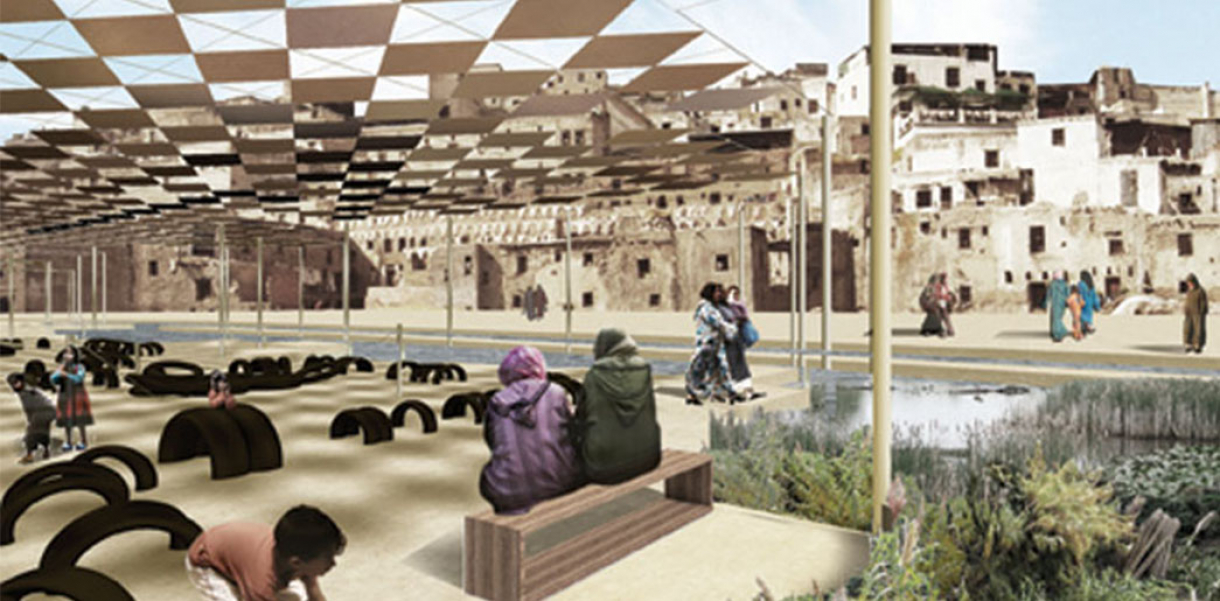The Medina of Fez was overpopulated with aging infrastructure and had a lack of open public space. But this was all set to change when a Morrocan architecture firm developed a strategic plan to not only address the ecology of the river but also the social and economic concerns of the city.
Bureau E.A.S.T.’s proposal included restructuring tannery operations and securing the local leather industry, enhancing health standards, and improving the general environmental quality of the Medina.
“The Régie Autonome Distribution d’Eau & Électricité de Fés (RADEEF), the Department of Water and Power of the Municipality of Fez, is in the process of constructing two new sewage treatment facilities to free the Fez River from raw sewage. Aligned with this initiative, the RADEEF commissioned us to propose a rehabilitation plan for the river,” explained Bureau E.A.S.T.
Based on an analysis of Fez’s urban and ecological context, the project at the city scale (City of Fez, including the ville nouvelle and the Medina) is a master plan with recommended measures for improving regional water quality.
At site scale, parcels within the Medina, the project consists of three critical interventions strategically phased to enhance water quality, remediate contaminated sites, create open spaces, and build on existing resources for economic development.
“The overall effect is a project that elevates the river into an urban infrastructure for bridging the gap between the needs of a 21st-century population and the historical standards for preserving the integrity of a UNESCO World Heritage designation.”
Designed by
Bureau E.A.S.T.
Website
www.sauvons-ouedfez.com






